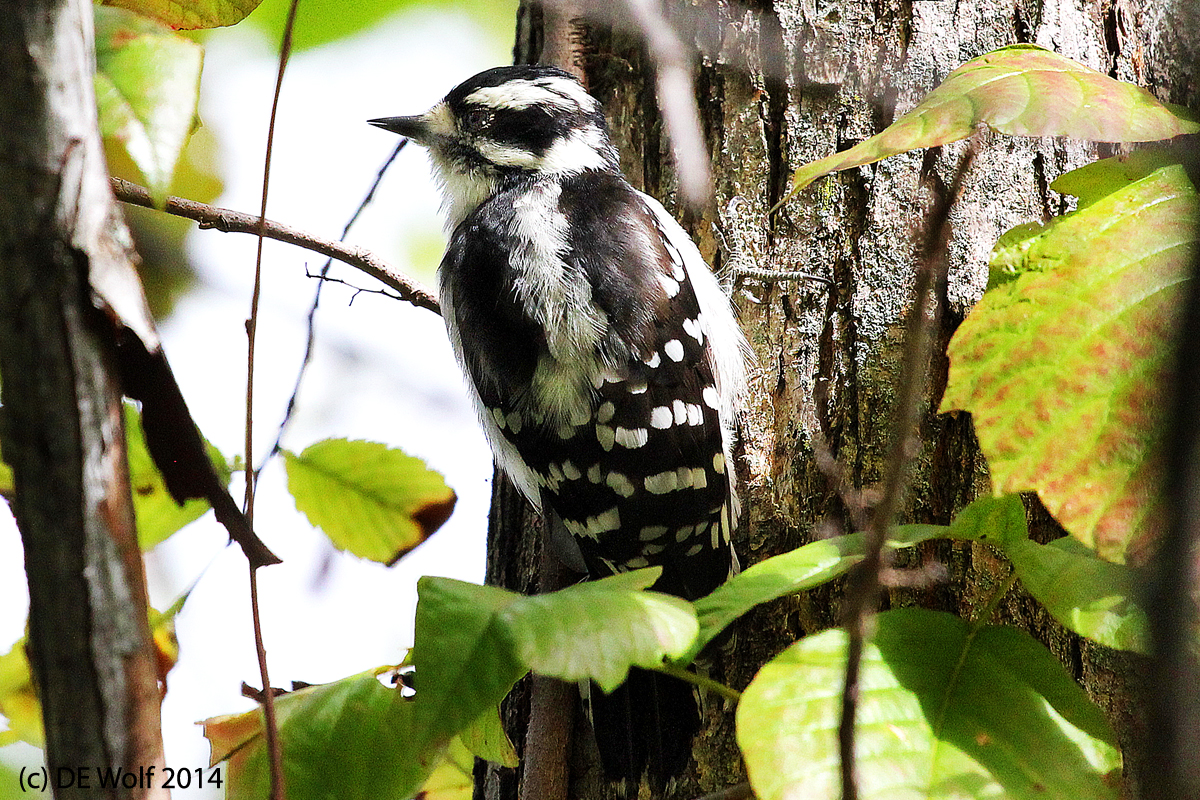My adventures trying to learn bird photography continue. I have done some research on this and found essentially little of any use: use big lens, use image stabilization, use 1 over the focal length of the lens as the shutter speed, be patient, take lots of images (snap, snap, snap), and GOOD LUCK. Well, THANK YOU VERY MUCH! I guess it’s one of those things that you just have to learn for yourself. What I’ve learned so far is that birds are afraid of me and too busy trying to eat and survive to pose for photographs. On the other hand, if you recognize that they are the modern descendants of dinosaurs, they probably have it right.
This past week I went out with by 70 to 200 mm zoom lens, translates to 142 to 320 on the Canon T2i. I decided in favor of flexibility and spontaneity rather than using my monopod, despite that fact that this lens is not image stabilized. It is beautiful but not image stabilized.
For some reason the woodpeckers were out in force at Fresh Pond. I imagined their world screaming with insects that I could not hear just below the bark of the trees – well maybe not screaming. But there was a lot of tapping going on, and I took a lot of photographs. I used center focusing and just keep shooting, starting from a distance and moving in.
Figure 1 is an example of a reasonably successful photograph of a downy woodpecker, Dendrocopus pubescens. If you are wondering why I give the species name, it’s a scientist thing. Oh all right maybe it is an affectation.
This particular woodpecker is a female and has no red cap. The short beak identifies it as a downy as opposed to a hairy woodpecker as does the ladder of black bars just visible on the underside of its tail. I am pretty happy with the composition and sharpness. The one big problem is that it was an overcast day. There was little contrast and as result very little catch-light in the bird’s eye. I accentuated it a bit, but the positioning still leaves its looking somewhat vacant.
I absolutely love the tufts of downy feathers on the bird’s back. Note the slightly green tinge on the very bottom. A very nice part of modern day digital photography is the intimacy that you form with your subject as you delicately retouch and manipulate in your image processing program. I think that the very fact that you are working with a positive image as opposed to a negative enhances this intimacy. And of course, there is the fact that it is so so immediate. In any event here is Madame Wood Pecker, and I enjoyed sharing a crisp late summer’s day with her.
Canon T2i with EF70-200mm f/4L USM lens at 188 mm, ISO 1600, 1/2500 th sec at f/5.6 no exposure compensation.


Lovely and with the fall colors just turning up on the leaves.
Pingback: Hairy woodpecker – Picoides villosus | Hati and Skoll Gallery